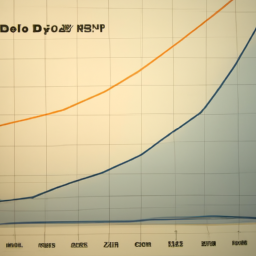Bonds have long been a staple of conservative investing, offering a reliable source of income for those looking to grow their wealth without taking on too much risk. However, in recent years, bond returns have been disappointingly low, leaving investors wondering whether they are worth the effort.
Now, thanks to a combination of rising interest rates and a stronger economy, bond returns are once again on the rise. This is good news for investors who have been sitting on the sidelines waiting for the right time to jump in.
But as with any investment, it is important to understand the risk involved. Bonds are not a set-it-and-forget-it investment, and investors need to be prepared to monitor their portfolios and make adjustments when necessary.
One of the biggest risk facing bond investors is inflation. Inflation erodes the value of the income generated by bonds, making them less attractive to investors. This is why it is important to pay attention to inflation data and adjust your portfolio accordingly.
For example, if inflation is expected to rise, investors may want to consider shifting their portfolio towards shorter-term bonds, which are less sensitive to changes in interest rates. On the other hand, if inflation is expected to remain low, investors may want to consider longer-term bonds, which offer higher yields.
Another important factor to consider when investing in bonds is your overall portfolio allocation. Studies have shown that a diversified portfolio of stocks and bonds can help reduce risk and increase returns over the long-term.
In fact, over the last 90 years, investment returns for different portfolio allocations of stocks and bonds have varied widely. By diversifying your portfolio, you can reduce your exposure to any one asset class and increase your chances of long-term success.
Of course, investing in bonds is not without its risk. For example, Pacific Investment Management Co (PIMCO) reportedly lost $340m in Credit Suisse AT1 investments following the UBS takeover. This highlights the importance of doing your due diligence and carefully evaluating the risk involved before investing in any bond.
Despite these risk, many investors are still turning to bonds as a way to generate income and grow their wealth. And with bond returns on the rise, there has never been a better time to consider adding them to your portfolio.
Inflation remains a larger problem for the U.S. economy than the average bond investor understands. This is why some analysts are revising their ratings on certain bond funds, such as the TLT fund, which invests in long-term U.S. Treasury bonds.
While the TLT fund has historically been a safe haven for investors looking to protect their portfolios from inflation, recent data has led some analysts to revise their ratings. This highlights the importance of staying up-to-date on the latest economic data and adjusting your portfolio accordingly.
Finally, investors worried about the Bank of Japan's threat to global markets have a chance to hear from those on the front lines in coming weeks. This is an opportunity for investors to gain insight into the risk facing the global economy and make informed decisions about their investment portfolios.
In conclusion, bonds are once again paying real money, making them an attractive investment option for those looking to generate income and grow their wealth. However, it is important to understand the risk involved and carefully evaluate your portfolio allocation before investing in any bond. By doing your due diligence, monitoring your portfolio, and adjusting your investments when necessary, you can increase your chances of long-term success.
